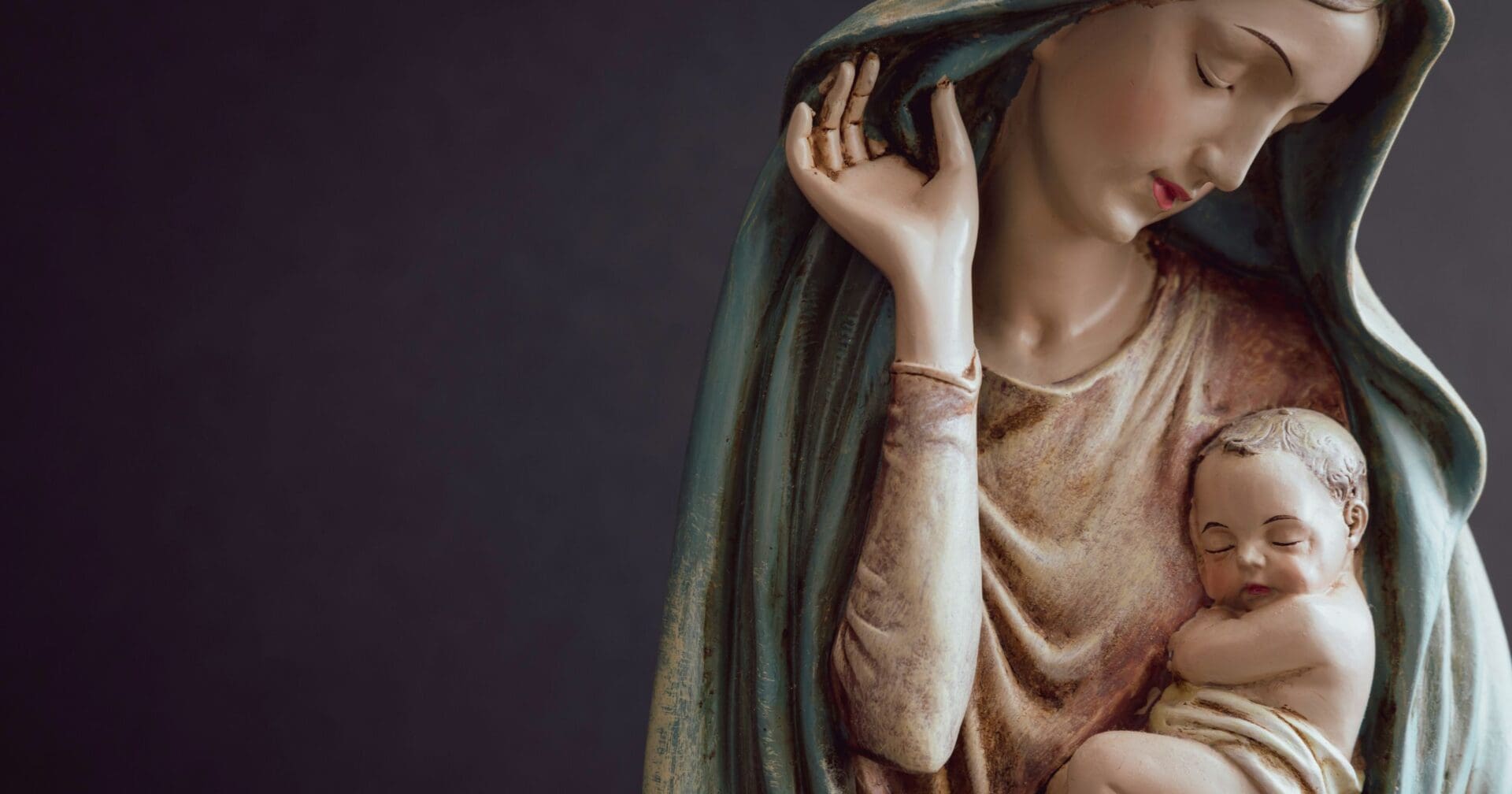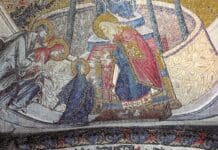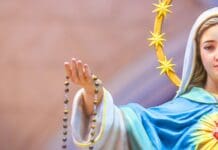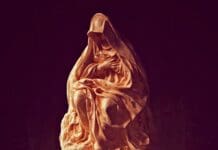Known by many names, above all we call her by the name Mary. As Catholics, we venerate Mary as the greatest of saints and are able to pray for her saintly intercession. Mary’s patronage extends far and wide, from virgins to mothers, nuns and fisherman, even to the entirety of humanity. She was “after her Son, exalted by divine grace above all angels and men.”
Mary’s patronage extends far and wide, from virgins to mothers, nuns and fisherman, even to the entirety of humanity. She was “after her Son, exalted by divine grace above all angels and men.”
Here are the three titles of Mary everyone should know, and the history surrounding how they came to be associated with her.
Throne of Wisdom
A devotional title that stems from the translation of the Latin sedes sapientiae, meaning Throne of Wisdom. This title is derived from Mary as the vessel in which Jesus Christ was born on Earth. In various icons, sculptures, and other works of the the Throne of Wisdom, Mary is seated atop a throne with the Holy Child in her lap. This imagery appeared in Europe in the 13th century based off of earlier Byzantine icons. In its earliest representations, the throne appeared with only scant handholds or front legs. Today we celebrate the feast of Feast of Mary, Seat of Wisdom on July 8th.
Queen of Heaven
This title is found prominently in the Litany of the Blessed Virgin Mary and in the Liturgy of the Hours, but also across many other writings and texts. The basis for this title is derived two part, from the Assumption of Mary, where at the end of her earthly life Mary was taken up into heaven, body and soul into heavenly glory, and because she is the Mother of God. In his 1954 encyclical, Ad caeli reginam, Pope Pius XII established the basis for the Queenship of Mary and promulgated the Feast of the Queenship of Mary. In it he wrote, “As Christ, the new Adam must be called a King not merely because He is Son of God, but also because He is our Redeemer, so, analogously, the Most Blessed Virgin is queen not only because she is Mother of God, but also because, as the new Eve, she was associated with the new Adam.” In the Book of Revelation, we also find a biblical origin of the title in the vision of the Women of the Apocalypse, commonly identified as the Virgin Mary.
A great sign appeared in the sky, a woman clothed with the sun, with the moon under her feet, and on her head a crown of twelve stars. She was with child and wailed aloud in pain as she labored to give birth. – Revelation 12:1
Theotokos, “God-Bearer”
Theotokos is Greek that means literally “one who bears the One who is God.” Its common Latin translation, Deipara, means “Mother of God.” This title is one of the earliest, attaining widespread use by the third century. Saints Augustine, John Chrysostom, Gregory the Theologian, and Athanasius all refer to Mary as Theotokos in their writings. This title was cause of a great deal of debate, over whether Mary was mother to Christ in His Divine Nature or His Humanity only. Nestorius of Constantinople argued that Mary should be called Chrisotokos, meaning “Birth-giver of Christ,” restricting her to only the mother of His Humanity, which lead to Nestorianism. However, the Third Ecumenical Council held at Ephesus in 431 formally affirmed the usage of Theotokos.
“The holy fathers… have ventured to call the holy Virgin Theotokos, not as though the nature of the Word or his divinity received the beginning of their existence from the holy Virgin, but because from her was born his holy body, rationally endowed with a soul, with which [body] the Word was united according to the hypostasis, and is said to have been begotten according to the flesh” – Cyril of Alexandria, second letter to Nestorius
Photo credit: Kara Gebhardt / Shutterstock.com


















[…] created church was named the Church of the Parthenos Maria (Virgin Mary), or the Church of the Theotokos (Mother of God). The building was reoriented to be used properly as a church. It’s face was […]